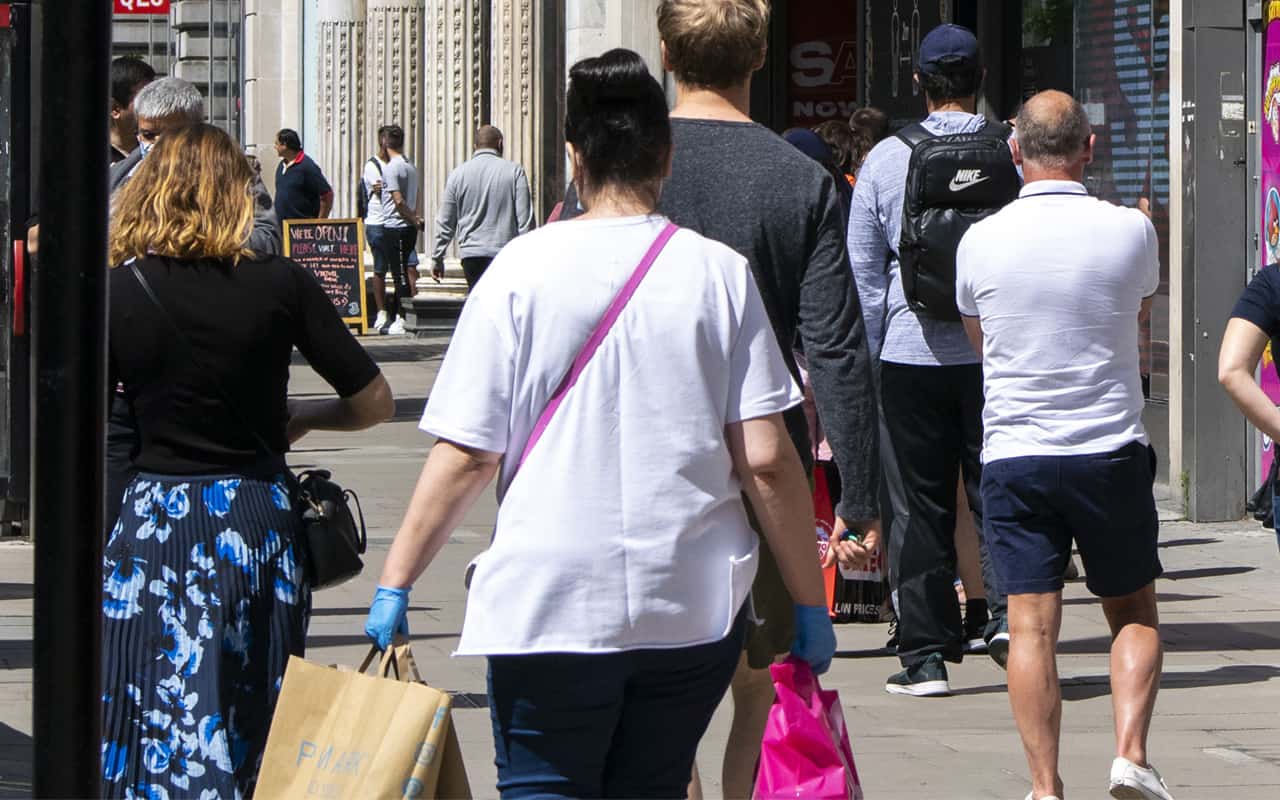UK footfall rise muted in May despite reopening of indoor hospitality
The lifting of restrictions on indoor hospitality on 17 May 2021, did not quite serve up the surge in footfall hoped for the month.
Covering the four weeks from 2-29 May 2021, UK footfall across all destinations was 27.5% lower than in the pre-pandemic 2019 level, compared with -32.7% in April, according to the latest monthly data from retail experts Springboard.
The wet weather, limitations on dining capacity and the fact that the increase mainly occurred post 5pm, when volumes are much lower than pre 5pm, were the reasons cited.
The gap in footfall from 2019 to 2021 widened over the month, from -25.3% in the first week of May to -26.8% by the last week.
Footfall declined from 2019 by -36.3% in high streets, -30.3% in shopping centres and -5.7% in retail parks.
Consumers are drifting back into larger destinations for work or leisure, with footfall in central London increasing from April by +17.2%, and in regional cities elsewhere in the UK by +20.4%, compared with a rise across all UK high streets from April of just +7.1%.
Footfall in smaller high streets declined marginally, by -0.7% from April in both market towns and high streets in outer London.
The increasing shift of footfall back into London and other regional cities will be strongly dependent on whether the government’s roadmap for the easing of restrictions will proceed as planned, or whether easing will be deferred beyond 21 June 2021.
Diane Wehrle, Insights Director at Springboard, said: “What has been a positive outcome is the early sign that consumers are drifting back into larger destinations for work or leisure, with footfall in central London increasing from April by +17.2% and in regional cities elsewhere in the UK by +20.4% compared with a rise across all UK high streets from April of just +7.1%.
“Unfortunately, this seems to have come at a cost for smaller high streets, with footfall declining marginally by -0.7% from April in both market towns and high streets in outer London.
“This must be regarded in context as footfall in Central London remains -58% lower than in 2019 and -33.7% lower in regional cities outside of the capital, versus -23% in high streets in outer London and -28.6% in market towns. The question on everyone’s lips is whether the shift of footfall back into London and other regional cities will continue. This will be strongly dependent on whether the government’s roadmap for the easing of restrictions will proceed as planned or whether easing will be deferred beyond 21 June.”







